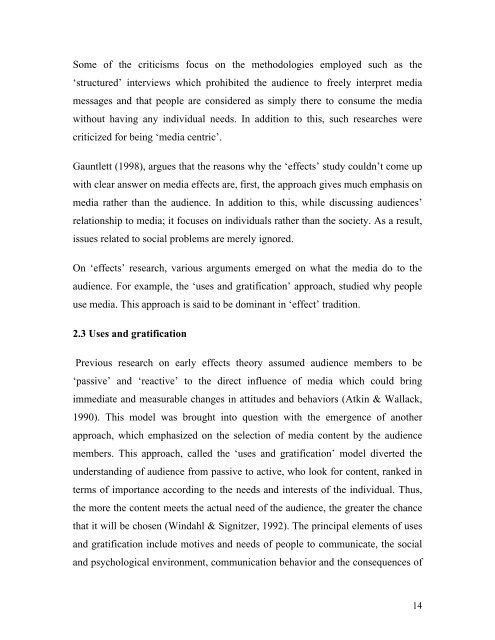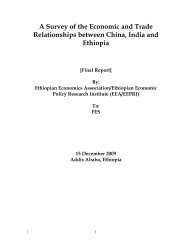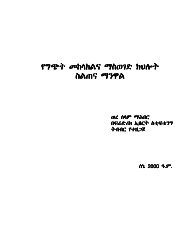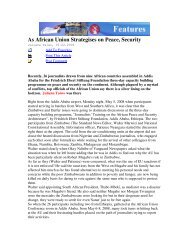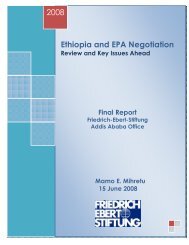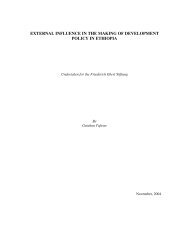Audience Survey Conducted on “Dewel†Radio ... - FES Ethiopia
Audience Survey Conducted on “Dewel†Radio ... - FES Ethiopia
Audience Survey Conducted on “Dewel†Radio ... - FES Ethiopia
Create successful ePaper yourself
Turn your PDF publications into a flip-book with our unique Google optimized e-Paper software.
Some of the criticisms focus <strong>on</strong> the methodologies employed such as the<br />
‘structured’ interviews which prohibited the audience to freely interpret media<br />
messages and that people are c<strong>on</strong>sidered as simply there to c<strong>on</strong>sume the media<br />
without having any individual needs. In additi<strong>on</strong> to this, such researches were<br />
criticized for being ‘media centric’.<br />
Gauntlett (1998), argues that the reas<strong>on</strong>s why the ‘effects’ study couldn’t come up<br />
with clear answer <strong>on</strong> media effects are, first, the approach gives much emphasis <strong>on</strong><br />
media rather than the audience. In additi<strong>on</strong> to this, while discussing audiences’<br />
relati<strong>on</strong>ship to media; it focuses <strong>on</strong> individuals rather than the society. As a result,<br />
issues related to social problems are merely ignored.<br />
On ‘effects’ research, various arguments emerged <strong>on</strong> what the media do to the<br />
audience. For example, the ‘uses and gratificati<strong>on</strong>’ approach, studied why people<br />
use media. This approach is said to be dominant in ‘effect’ traditi<strong>on</strong>.<br />
2.3 Uses and gratificati<strong>on</strong><br />
Previous research <strong>on</strong> early effects theory assumed audience members to be<br />
‘passive’ and ‘reactive’ to the direct influence of media which could bring<br />
immediate and measurable changes in attitudes and behaviors (Atkin & Wallack,<br />
1990). This model was brought into questi<strong>on</strong> with the emergence of another<br />
approach, which emphasized <strong>on</strong> the selecti<strong>on</strong> of media c<strong>on</strong>tent by the audience<br />
members. This approach, called the ‘uses and gratificati<strong>on</strong>’ model diverted the<br />
understanding of audience from passive to active, who look for c<strong>on</strong>tent, ranked in<br />
terms of importance according to the needs and interests of the individual. Thus,<br />
the more the c<strong>on</strong>tent meets the actual need of the audience, the greater the chance<br />
that it will be chosen (Windahl & Signitzer, 1992). The principal elements of uses<br />
and gratificati<strong>on</strong> include motives and needs of people to communicate, the social<br />
and psychological envir<strong>on</strong>ment, communicati<strong>on</strong> behavior and the c<strong>on</strong>sequences of<br />
14


